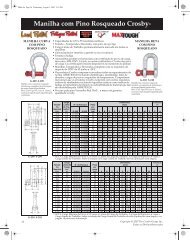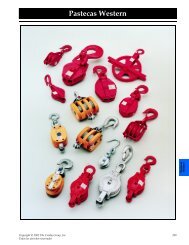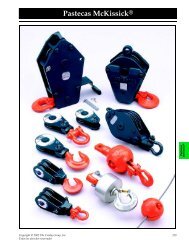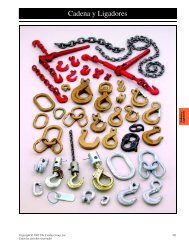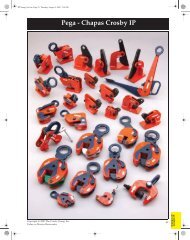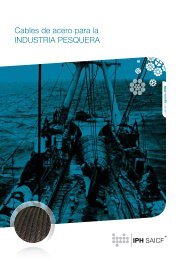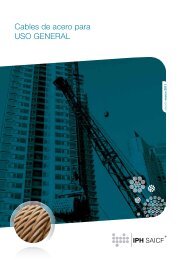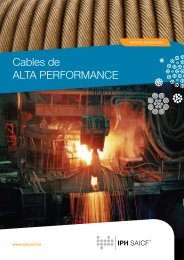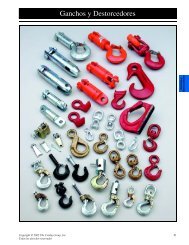Untitled
Untitled
Untitled
You also want an ePaper? Increase the reach of your titles
YUMPU automatically turns print PDFs into web optimized ePapers that Google loves.
6<br />
USER TOOLS<br />
Slip and<br />
cutoff plan<br />
The run and cutoff program must be set according to:<br />
• API recommendations about working limits.<br />
• Correction of these limits according to the service<br />
factor (API).<br />
• Adjustment of limits to specific situations.<br />
• Optimization of the run and cutoff program through<br />
systematized experience.<br />
SIMPLIFIED LIMIT TABLES<br />
API recommendations about working limits cover a great number of cases and variables.<br />
The following simplified tables include the most typical values of work limits in ton-mile, and the<br />
corresponding cutoff lengths. Although these combinations apply to many cases, we recommend<br />
to consider the contents of “Explanatory Notes” for their application.<br />
Diameter Work limit for cutoff (I) Cutoff length (II)<br />
(in) (ton.mil) (m)<br />
7/8<br />
1<br />
1 1/8<br />
1 1/4<br />
1 3/8<br />
350<br />
500<br />
800<br />
1200<br />
2000<br />
18<br />
18<br />
24<br />
30<br />
35<br />
I. For Service Factor =5<br />
II. It is recommended to adjust the length to the specific characteristics of the rig.<br />
EXPLANATORY NOTES<br />
IPH SAICF introduces this simplified table<br />
considering these premises:<br />
• The reference Standard for this table is<br />
API RP 9b.<br />
• The simplified table shows the values<br />
for “light duty” according to the Standard.<br />
• IPH 619API ropes from IPH SAICF generally<br />
meet these values or even higher in all types<br />
of work, considering correction due to Service<br />
factor.<br />
• The length to be cut are approximations that<br />
result from the average of values




